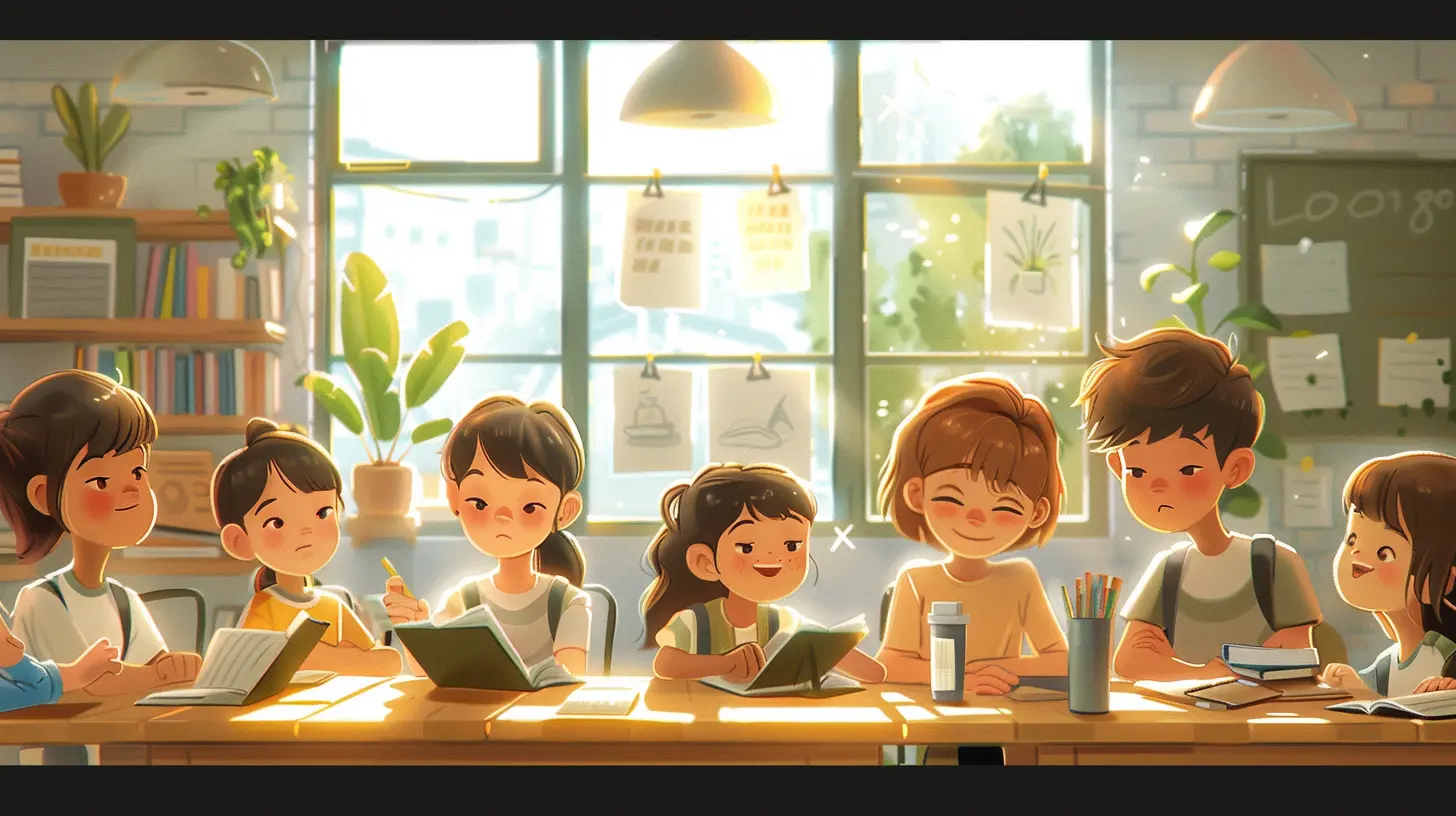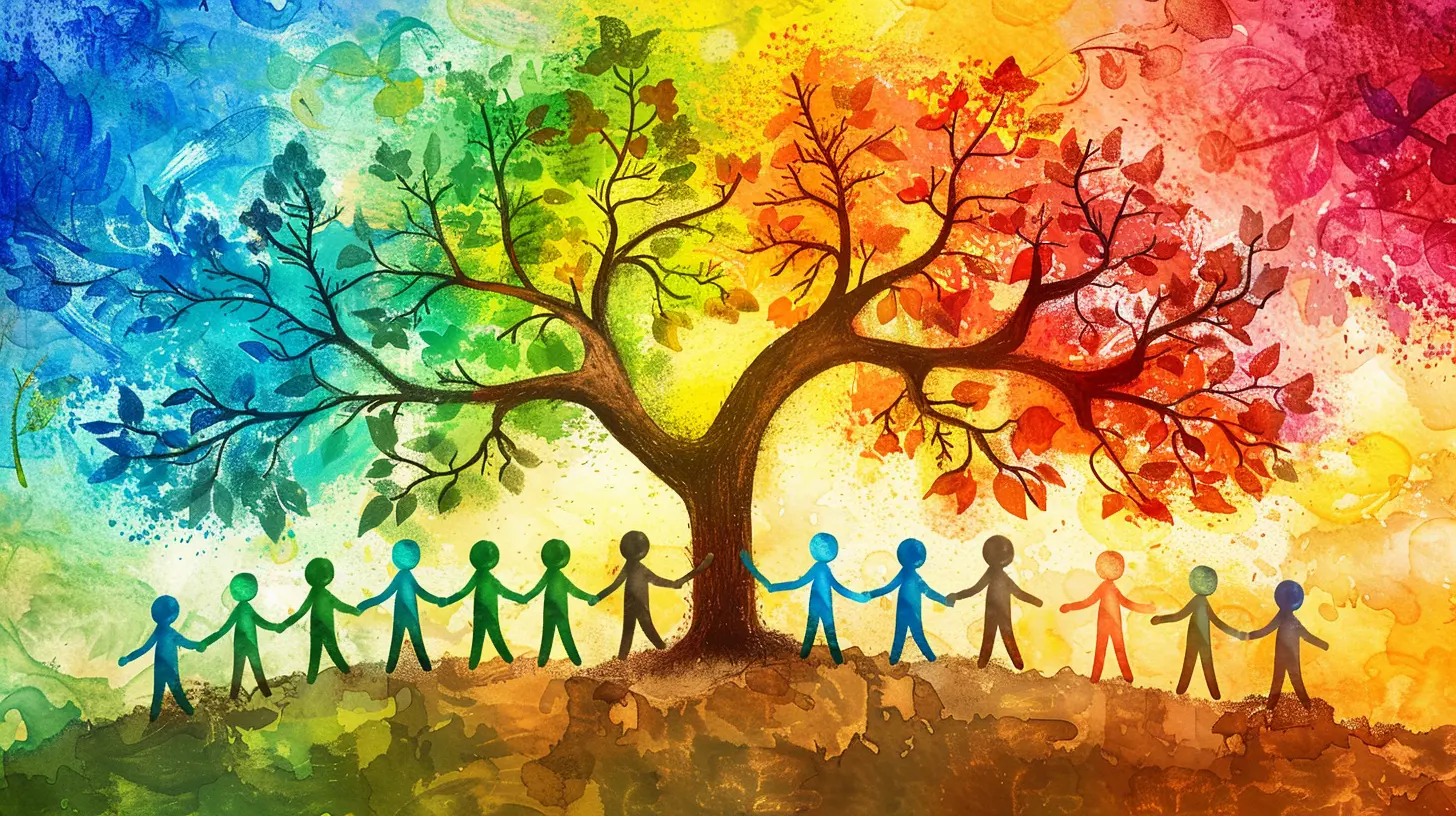How to Cultivate a Collaborative Learning Environment
28 July 2025
Ever tried to build a group project with zero collaboration? It’s like assembling IKEA furniture blindfolded—frustrating, confusing, and probably ending in a lopsided bookshelf. When it comes to learning, the same rule applies: teamwork is everything.
Whether you're a teacher, a student, or anyone running a classroom (virtual or in-person), cultivating a collaborative learning environment is a game-changer. Not only does it boost creativity and critical thinking, but it amps up motivation and makes learning, dare I say it, fun.
So, how exactly do you turn your learning space into a hive of productive, collaborative energy? That’s what we’re diving into—let’s build that metaphorical bookshelf together (this time with instructions).
What Is a Collaborative Learning Environment, Anyway?
Let’s not overcomplicate it. A collaborative learning environment is simply a space where students (or learners) work together to share knowledge, solve problems, or create something cool. Everyone contributes. Everyone learns. No one’s left behind with a pile of unanswered questions.Think of it as the educational version of a potluck dinner—each person brings something to the table, and together you create a feast of ideas. Delicious, right?
Why Collaboration Matters in Learning
Before we dive into the “how,” let’s talk about the “why.” Why is collaboration such a big deal?1. It Sparks Engagement
When people work together, learning becomes interactive. It’s no longer about passively absorbing information—it’s about bouncing ideas off each other and building something new. That’s when the magic happens.2. It Builds Social Skills
Teamwork teaches communication, empathy, conflict resolution, and how to deal with that one group member who disappears during projects. (Yes, we’ve all been there.)3. It Fosters Deeper Understanding
Explaining concepts to others and hearing different perspectives helps lock in learning. It shifts the focus from memorization to mastery.4. It Mirrors Real Life
In the real world, collaboration is everywhere—in jobs, relationships, and communities. Preparing students for life means teaching them how to work together.
The Core Ingredients of Collaboration
Creating a collaborative learning environment isn’t about rearranging desks or assigning random group projects. It’s about intentionally shaping a culture.Here are the core ingredients:
🧠 Mutual Respect
Every voice matters. Students need to feel safe sharing ideas without fear of judgment.🔄 Open Communication
Encourage active listening. Model how to give constructive feedback. Set the stage for honest dialogue.💬 Shared Responsibility
Collaboration isn’t about one or two people carrying the team. Everyone should pull their weight.⚖️ Flexibility and Adaptability
Things won’t always go as planned—and that’s okay. Collaborative environments embrace flexibility and problem-solving in the moment.
10 Powerful Ways to Cultivate a Collaborative Learning Environment
Ready to roll your sleeves up? Let’s dig into the practical stuff. These 10 tips will help you build a collaborative learning environment where students aren’t just present—they’re pumped.1. Set the Vibe from Day One
First impressions matter. From the very first interaction, show that your classroom is a safe, supportive space where collaboration is the norm.Try icebreakers, group games, or team challenges early on. Make it clear that in your space, we learn together.
2. Establish Clear Expectations
Let’s face it—group work can be a minefield if expectations aren’t crystal clear. Set guidelines for behavior, participation, and interaction.Even better? Let students help you create these norms. They’ll feel more invested and more likely to follow them.
3. Build Trust (It’s the Secret Sauce)
Trust doesn’t show up overnight. It’s built brick by brick—through consistency, kindness, and shared experiences.Encourage vulnerability by modeling it yourself. Show your students that it’s okay to make mistakes, ask questions, and admit when you don’t know something. This creates a culture of honesty and openness.
4. Use Strategic Grouping
Random groups can be fun, but there’s a time and place for strategy. Mix it up. Sometimes group students by skill level, interests, or personality types.And don’t be afraid to re-shuffle the deck now and then—it keeps things fresh and prevents cliques.
5. Mix Up the Methods
Collaboration doesn’t have to be just group discussions or traditional projects. Think outside the box:- Debate circles
- Peer teaching
- Collaborative digital whiteboards
- Role-playing scenarios
- Think-pair-share
The more variety you bring in, the more likely every student will find a way to thrive.
6. Teach the “How” Behind Collaboration
Here’s a wild idea: teach students how to collaborate.Things like:
- Active listening
- Conflict resolution
- Giving and receiving feedback
- Time management in groups
Don’t assume they already know this stuff—many don't. A quick mini-lesson can make a huge difference.
7. Integrate Technology (But Thoughtfully)
We live in a digital world—why not use it to your advantage?Use tools like:
- Google Docs for shared writing
- Jamboard or Padlet for brainstorming
- Zoom breakout rooms for virtual collaboration
- Trello for managing group tasks
But keep it simple. The goal is better collaboration, not tech overwhelm.
8. Encourage Peer Teaching
One of the best ways to understand something? Teach it.Give your students opportunities to become the “experts.” They can present, explain processes, or lead mini-lessons. It boosts confidence and reinforces learning.
And spoiler alert: it’s also super empowering.
9. Celebrate Collaboration Wins
Catch students doing collaboration right—then shout it from the rooftops (or, you know, the classroom whiteboard).Highlight great teamwork, kind communication, and creative group efforts. A simple “Team of the Week” shoutout can go a long way.
10. Reflect and Tweak Often
No system is perfect. Build in time for reflection.Ask:
- What worked well in our collaboration today?
- What could we do better next time?
- How did everyone feel about their role?
Reflection helps refine the process and makes students more self-aware.
Overcoming Common Collaboration Challenges
Let's be real—collaboration isn’t always sunshine and rainbows. Sometimes people don't get along. Sometimes one person does all the work. Sometimes it’s chaos.Here’s how to tackle some common hurdles:
🐢 The Silent Contributors
Some students are shy or introverted—and that’s okay. Give them alternative ways to contribute, like writing ideas down, using digital tools, or assigning specific roles that suit their strengths.💬 The Talk-Over-You Types
Got a student who dominates every discussion? Set clear turn-taking expectations. You can also use talking tokens (literal or digital) to balance airtime.🎭 The Disappearing Act
You know the one. The group member who mysteriously vanishes whenever there’s work to be done? Avoid this by assigning individual responsibilities within the group—and checking in regularly.🔄 Constant Conflict
If the group dynamics are off, step in early. Guide them through conflict resolution and encourage empathy. Sometimes just giving them space to vent (respectfully) can help clear the air.Final Thoughts: Build It and They Will Come
Here’s the thing about collaborative learning environments: they don’t build themselves. They need nurturing, effort, and a sprinkle of patience. But once they take root? Oh boy, do they flourish.When learners feel connected, respected, and heard, they bring their full selves to the table. And that’s when the real learning begins.
So, whether you're in a classroom, a Zoom room, or somewhere in between—start weaving collaboration into the fabric of your environment. One activity, one conversation, one group project at a time.
And remember, the bookshelf may wobble at first. But with the right tools (and a little humor), you’ll build something strong, beautiful, and totally worth it.
all images in this post were generated using AI tools
Category:
CollaborationAuthor:

Bethany Hudson
Discussion
rate this article
1 comments
Casey Snyder
Collaboration thrives on trust and open dialogue; cultivate an environment where questions are welcomed, ideas are shared, and every voice has a seat at the table.
August 13, 2025 at 3:37 AM

Bethany Hudson
Absolutely! Trust and open dialogue are essential for fostering collaboration. Creating a space where everyone feels heard encourages innovation and teamwork.


